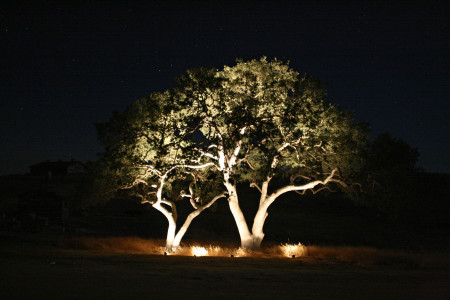Now that spring is in full swing, most homeowners are hard at work making landscaping improvements. Whether you are planting grass, flowers, shrubs, or trees, all of these plants add value to your home and increase your curb appeal. Trees, especially, are some of your most respected landscape features, communicating to all who pass by that your home and neighborhood is established. Our country just celebrated Arbor Day on April 26th, but any day is a good day to care for your trees. As you prune them, mulch around them, and plant new ones, don’t forget that they deserve to be seen both day and night, and with outdoor lighting from Outdoor Lighting Perspectives of Columbus, they can.

Some of our favorite trees to light are deciduous trees (those that lose their leaves in the fall – like river birch, oak, maple, and serviceberry). Evergreens can certainly be lit, but deciduous trees just look better with outdoor lighting because of their full crowns. Light spreads as it moves away from its source, and light rays catch in the full crowns of deciduous trees. Because the crown is the focal point of the tree, lights are placed on the ground and angled up. This technique is called uplighting and creates a striking, dramatic effect. To achieve the same effect on evergreens, lights must be placed very far from the tree because their bulk and focal point is at the bottom. Also, as the tree grows, the light must be moved further away to maintain good illumination.
If you are looking for a unique lighting effect for a tall, deciduous tree, consider moonlighting. This technique involves placing light fixtures up in tree branches. The rays fall through the branches, casting foliage shadows on the ground and approximating how moonlight falls through the canopy during a full moon. This can be especially lovely if you have a tree whose branches stretch over a path.
Another technique we use in tree lighting is called washing. This technique is excellent to use on Japanese maple or blue spruce because of their small, almost shrub-like, stature. Washing involves placing lights so that the rays graze the object and softly illuminate its entirety. Lighting in this way allows texture and detail to show through, rather than creating the dramatic shadows. Because Japanese maples have distinct shapes, unique foliage, and different foliage color, you’ll want to see every little detail. Wash lighting makes that possible.